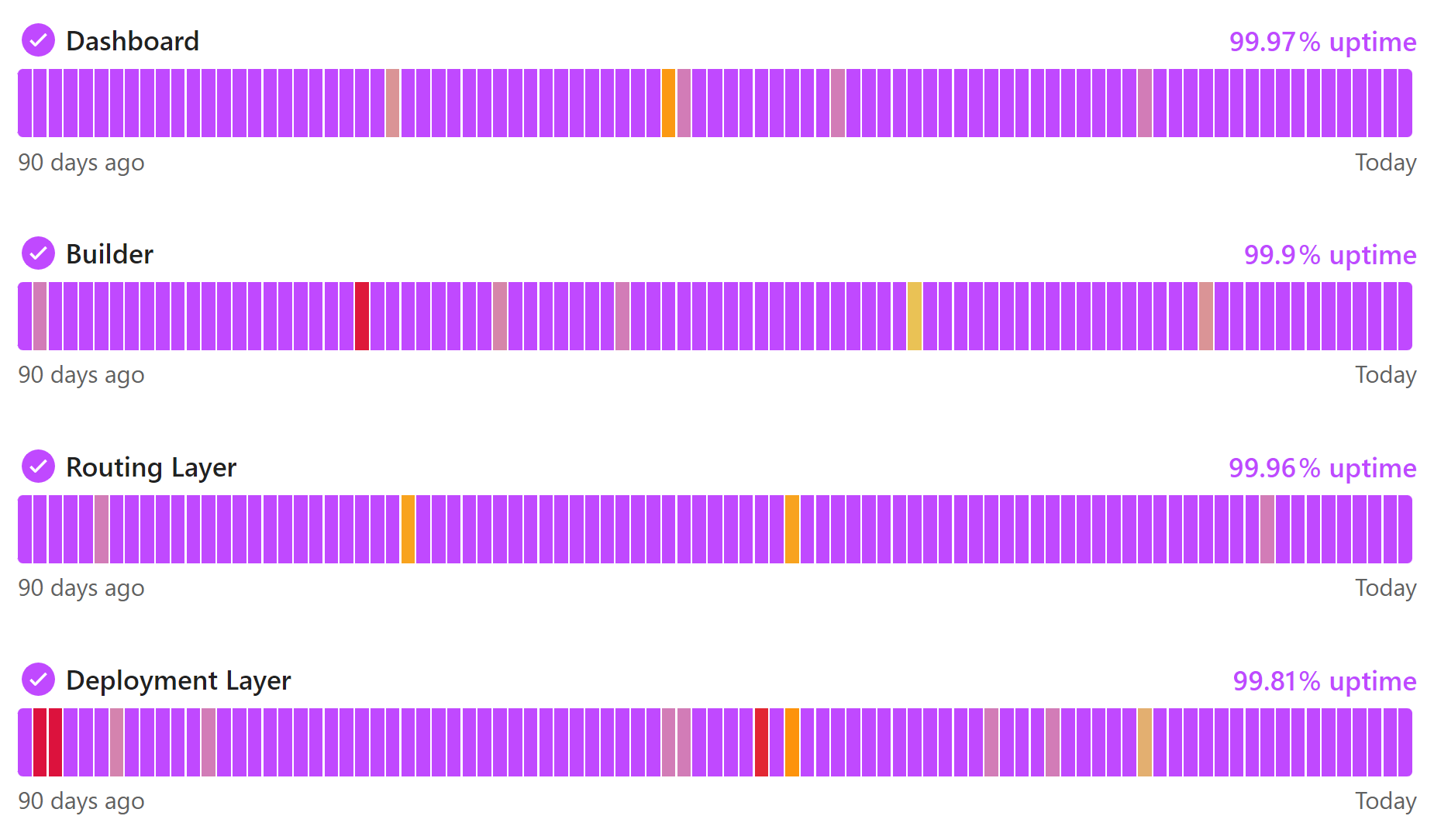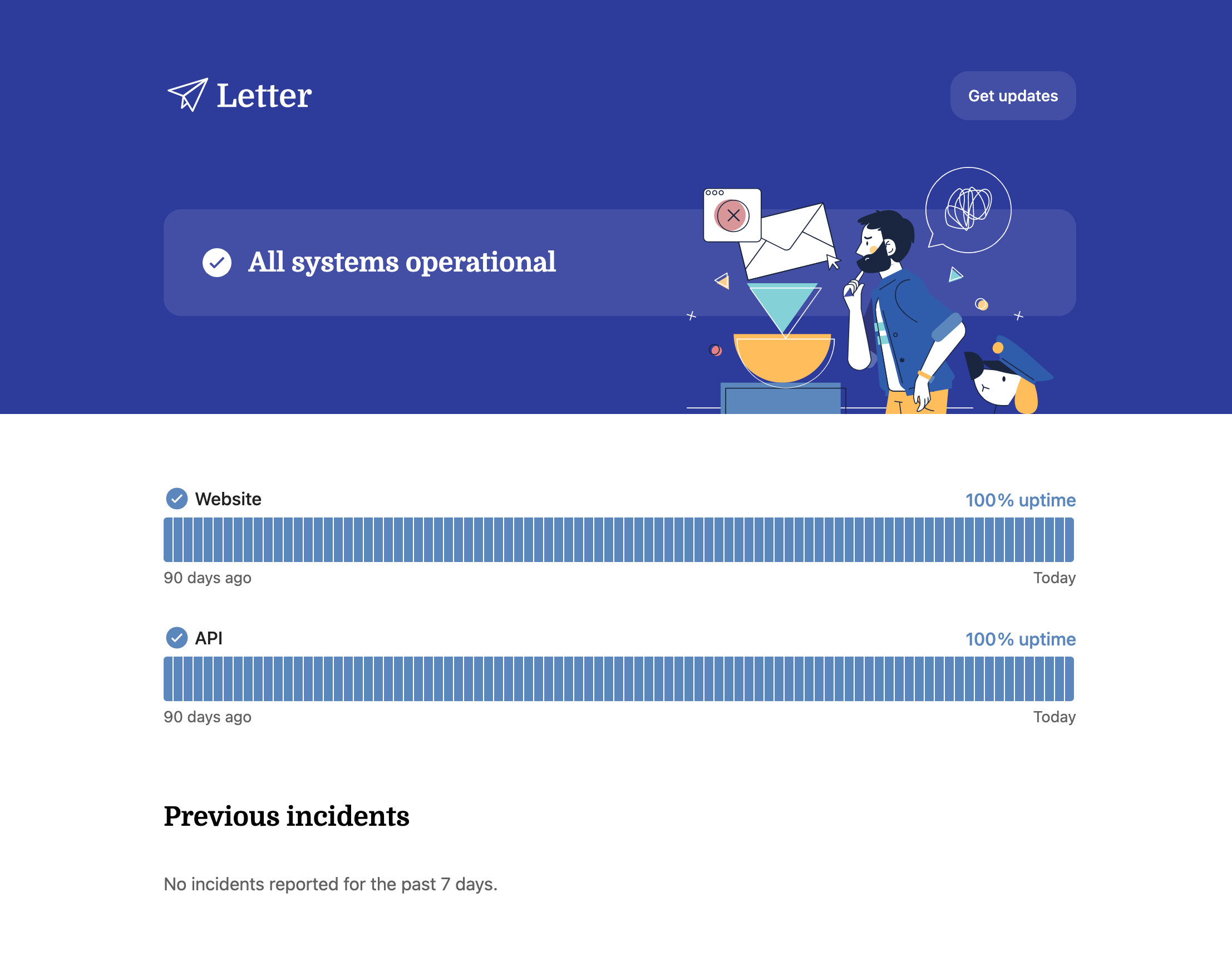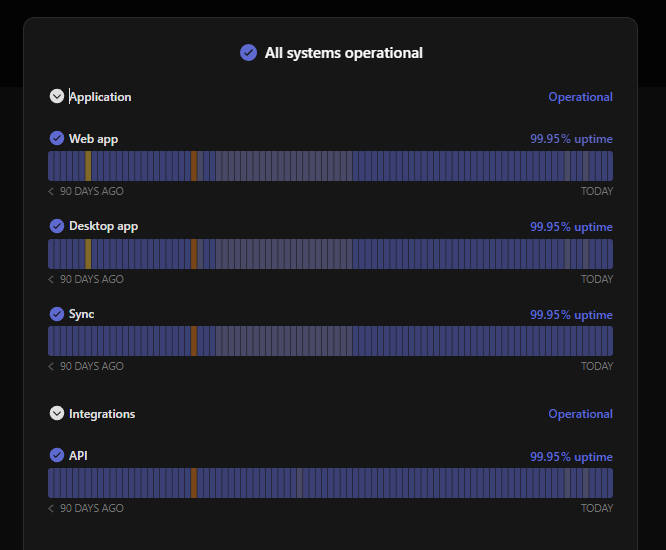What is Exploratory Testing: Definition, Types, and Preparation

You’ve rooted out all the pesky bugs with white box and black box testing, right? Well, once your application goes live, it will be subject to a whole new level of scrutiny by end users. And in most cases, they’ll find something your team missed during testing.
That’s where exploratory testing comes in. While it’s a lesser-known form of software testing, it’s worth adding to your testing phase because it can reveal blind spots and unknown bugs by mimicking user behavior. Your team can employ freestyle or scenario-based Exploratory Testing, although the strategy-based type is more common in a DevOps environment.
Exploratory testing helps you to eliminate issues or critical bugs which could lead to app crashes or accessibility problems. Remember that issues can still happen, regardless of your comprehensive testing procedures. It's always best to have a platform like Instatus, where you can constantly keep your users in the loop with updates without having to reply to constant support emails while your app is in a downtime state.
While Instatus can help, it’s always best to avoid long periods of downtime with testing. So,let’s go over what exploratory testing is, the different types of exploratory testing and how you can conduct your own.
What is Exploratory Testing?
Exploratory Testing is an open-ended software testing approach. A tester has total freedom to explore the software and ask questions, then immediately pursue a line of questioning by creating and executing test cases.
In this way, the tester's actions intend to mimic an end-user as closely as possible. End-users seem uniquely capable of finding bugs and other issues because they may follow an unexpected path of action. Exploratory Testing is an essential part of a robust pilot phase, so these latent problems are found before your end users get their hands on the product. Exploratory testing helps find bugs, whether surface-level or more insidious, without implications on an app’s stability.
Exploratory Testing vs Other Types of Testing
Exploratory Testing is far less structured than White Box Testing. White Box Testing is aimed at an application’s internal coding and infrastructure. Generally, it requires a solid knowledge of these areas to test.
Black Box Testing, which tests an application's external functionality and behaviors, shares some key similarities with Exploratory Testing:
- No required knowledge of internal infrastructure or implementation
- Test the external functionality and behavior
- Quicker than white box testing
- Blind testing coverage
These two approaches are so similar that Exploratory Testing is sometimes considered a technique within a greater Black Box Testing framework.
Types of Exploratory Testing
There are three types of Exploratory Testing that your testers can use as a guide or creative launching pad for new ideas:
1. Open-Ended ‘Freestyle’
With freestyle Exploratory Testing, there are no plans or rules directing your testers. This is the most common type when there has been no time to prepare, and testers are utterly unfamiliar with the application. Essentially it’s just letting testers loose within the application to see what they can find. It’s not as tried and true as the other types of Exploratory Testing, but it can add value and information to your overall testing results in a pinch.
2. Strategy-Based
This type of Exploratory Testing aligns with DevOps principles because it’s well – strategic. Instead of taking a shot in the dark when trying to understand the motivations and actions of end users, creating a strategy and making a plan of attack is a better choice. An experienced QA tester is usually the leader for this Exploratory Testing style.
3. Scenario-Based
In this type of Exploratory Testing, a tester is provided or imagines scenarios that an end-user will face when using the live application. For example, creating an account. The tester tries to find all pathways to creating an account from various starting points around the application.

Preparing for Exploratory Test
While somewhat informal and open-ended, Exploratory Testing is still an effective form of software testing if your team has a plan. There are some key ways to prepare for Exploratory Testing that can increase the number of issues and bugs found before deployment:
1. Understand the End-User
Creating a software application is about understanding the end user. If your team hasn’t already, they should use focus groups to garner greater knowledge about the intended audience:
- Why are they using the software?
- What is their level of technical expertise?
- What features are they looking for?
- What tasks do they want automated?
- What kinds of workflows are difficult for them?
- How do they react to outages or bugs?
Armed with the answers to these questions, your team can better understand potential end-user's behavior patterns and motivations.
2. Create Exploratory Map
If your organization prefers strategic-based exploratory testing, start with an exploratory map that includes all application features. Creating an exploratory map helps your QA team understand how deep features extend into different aspects of the application. Here’s an example of an exploratory map:
-
Start on the Homepage. Once this page is thoroughly outlined, you can move to another page.
-
List all surface features as Level 1. For example, a social media application might have the following Homepage features:
- Navigation Bar
- Sidebar
- Main Feed
- Friends List
-
Within each Level 1 feature, list all secondary features. For example, within the navigation bar, you might have the following Level 2 features:
- Home
- Profile
- Friends List
- Groups
- Memories
- Photos

- A feature may further expand into a third-tier feature. For example, the profile option in the navigation menu may further expand into the following Level 3 list:
- Edit Profile
- Edit Permissions
- Settings and Privacy
With a detailed exploratory map, your testers have an exhaustive list of features to test and check.
3. Know What Competitors are Missing
Focus groups where users navigate and use a competing application can be very revealing for testers. Your team can learn where your competition's software is lacking. Testers can pay special attention to these areas when testing your organization’s application to ensure that it doesn’t repeat the same mistakes and instead improves on something the competitor does poorly.
For example, forcing users to register before buying is a highly unpopular design choice that increases cart abandonment. If your competitor is doing this, your testers should check that your developers have coded a better checkout process.

4. Use Real Devices for Testing
You know end-users won’t be using emulators or simulators when using your application, so Exploratory Testing shouldn’t use those methods. Use real devices with real configurations and real user conditions for testing.
This is the best way to ensure that the user experience is replicated as closely as possible, so your QA testers aren’t missing potentially problematic issues that only reveal themselves on actual devices. These issues can trigger service interruptions or outages if they are left for production. If outages do occur, remember that Instatus can help you keep your users updated without the need for constant support tickets bogging down your team. While downtime can be frustrating, you can help build trust by providing a good user experience.
Wrapping up Exploratory Testing
If your team wants to get started with Exploratory Testing, you can start by selecting freestyle, strategy-based, and simulation-based, or using a combination of the types. Then your organization should prepare to make the most out of Exploratory testing with planning. Create an exploratory map, and study your user base and your competitor's product to instruct your testers what to focus on.
Exploratory Testing is valuable because it looks at your application through the eyes of an end-user. End-users often interact with software in unexpected ways, and sometimes they can uncover system-breaking bugs that you really don’t want to wait until production to learn about.
And remember, even if your app is having some issues, an Instatus status page will help you maintain a high level of trust with your users. A status page will help you keep your audience updated with any issues and fixes you’re carrying out while providing a good user experience.
Get ready for downtime
Monitor your services
Fix incidents with your team
Share your status with customers




